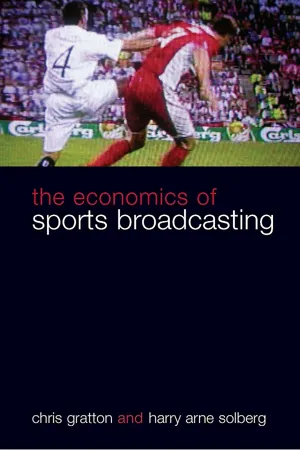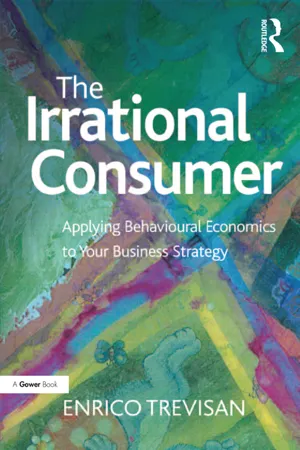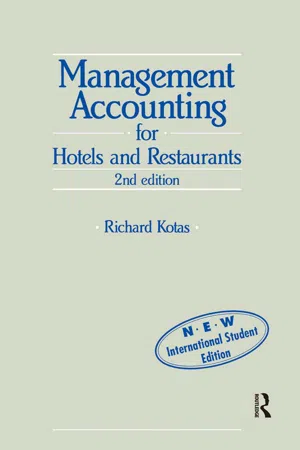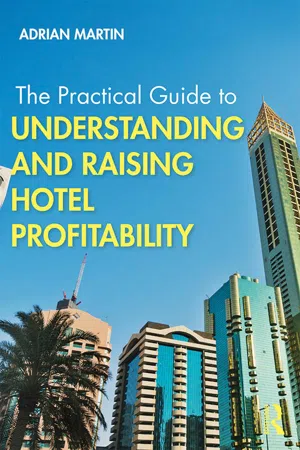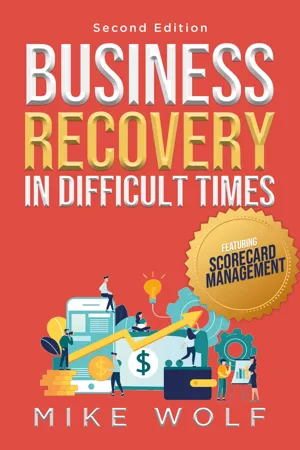Fixed And Sunk Costs
Fixed costs are expenses that remain constant regardless of the level of production or sales, such as rent and salaries. Sunk costs are expenses that have already been incurred and cannot be recovered, regardless of future decisions. Both types of costs are important for businesses to consider when making financial decisions and planning for the future.
7 Key excerpts on "Fixed And Sunk Costs"
- eBook - ePub
- Chris Gratton, Harry Arne Solberg(Authors)
- 2007(Publication Date)
- Routledge(Publisher)
...Some inputs can be resold, but not all. However, it is the inputs that cannot be resold, or do not have any other usage that are the sunk costs. One reason for this can be that the inputs are very rare and specialised, which limit their field of utilisation. It can also have to do with terms in contracts. Any presence of sunk costs will influence decision-making processes in production. When sunk costs have been paid, there is no economic regain for the producer even from closing down production and going out of business. Thus, as a rule of thumb, the sunk costs that are paid for should not influence on decisions taken by the firm thereafter (Johnsen, 2001). Indeed, the difference between sunk costs and fixed costs can sometimes be confusing. Some of the fixed costs can be avoided if the firm stops its production, while all of them will disappear if it goes out of business. This, however, is different for sunk costs. To illustrate their nature, let us imagine that a TV channel acquires the sports rights for a team tournament that consists of 50 matches. The channel pays a fixed fee of €10 million, which we assume is independent of the income it earns from broadcasting the matches. Thus, the fee does not correlate with the number of matches being broadcast. Hence, the €10 million has to be regarded as sunk costs. Nothing can be done to dispose of them, unless the seller is willing to renegotiate the deal or some other channels are interested in buying the rights. Therefore, the €10 million fee should not influence which and how many matches the channel broadcast. Instead, these decisions should be based on a comparison of the income from broadcasting the matches with the income from alternative programmes. Table 4.1 shows the TV rating figures from Euro 2004 in all the countries that participated, with the exception of France. As seen, matches involving national teams were the most popular...
- eBook - ePub
The Irrational Consumer
Applying Behavioural Economics to Your Business Strategy
- Enrico Trevisan(Author)
- 2016(Publication Date)
- Routledge(Publisher)
...5.1). 5.1 THE COSTS OF THE PAST In contrast with the claims of economic theory, the idea of sunk costs being irrelevant does not appear to correspond with the manner in which present decisions are influenced by past expenditure. In reality, the costs of the past count. In particular, we can say that other things being equal, the fact of paying for a product will increase the probability and the level of its usage. Take the case of pricing models based on a flat-rate mechanism. This type of pricing, which is now very prevalent, is characterized by the fact that gaining access to the service involves the payment of a certain fixed cost, regardless of the effective level of usage. Once this amount is paid, it becomes effectively a sunk cost in that it will not be reimbursed and does not vary in accordance with the real usage of the product. Classic examples include fixed rate unlimited calls telephone contracts, so-called ‘eat as much as you like’ deals in catering and free bank withdrawals from cash machines. Even subscriptions to newspapers and magazines can be interpreted as flat-rate deals: by paying a given sum of money at the beginning of the subscription period you get your own personal copy delivered, independently of whether the publication in question is read or not. Figure 5.1 The sunk costs effect: what is a rational consumer supposed to do? With these models what is generally found is a greater usage of the product in comparison with that associated with users of products with different pricing structures...
- eBook - ePub
- W. Arthur Lewis(Author)
- 2013(Publication Date)
- Routledge(Publisher)
...Chapter I Fixed Costs This chapter is concerned with the case where similar services are supplied by two different industries, one or both of which has a high ratio of fixed to variable expenses. Gas and electricity and road and rail transport are the outstanding examples, and special reference will be made to them. It has always seemed difficult to fit this type of case into the general rule that price should equal marginal cost because it has never been clear what marginal cost means in such contexts. The first problem is therefore to define the line between marginal and fixed costs. I The Anatomy of Fixed Costs 1. In welfare economics the cost of something is the value to other producers of the resources which are used to produce it; cost is measured by computing what expenses would be saved if production were curtailed and resources released for use elsewhere. This cost differs from cost in the business or accounting sense, which is simply the sum expended on production, because there are expenses which the business man cannot escape by curtailing his output—e.g. the sum invested in specific equipment which is no longer required. The economist’s costs are those which can be escaped; fixed costs are those which cannot: escapability is the essence of the distinction. It is not, however, a simple distinction, because some costs are escapable in some senses but not in others, and we must spend a little time on it. Fixed or inescapable costs fall into four categories : (a) some are inescapable in the short run but not in the long run; (b) some are joint costs, and inescapable only in that sense; (c) some are inescapable for small but not for large changes of output; and (d) some are inescapable in all senses. 2...
- eBook - ePub
- Richard Kotas(Author)
- 2014(Publication Date)
- Routledge(Publisher)
...Whatever the sales, fixed costs remain constant. Examples of fixed costs are rent, rates, management salaries, administrative and office expenses and depreciation. All these accrue with the passage of time, and are, therefore, sometimes referred to as period costs. Variable costs are those which vary in proportion to the sales volume. Whatever the change in sales there is, for practical purposes, a proportional change in variable costs. The best examples of variable costs are food and beverage costs. When the volume of business increases by ten per cent there is normally a ten per cent increase in food and beverage costs. Conversely, a particular percentage decrease in the sales volume will be matched by that percentage decrease in food and beverage costs. In addition to costs which are fully fixed or fully variable there is a group described as semi-fixed costs (also referred to as semi-variable costs). These are costs which move in sympathy with but not in proportion to the volume of sales. Examples of semi-fixed costs are gas, electricity, telephone, breakages and renewals. Let us take an example. Suppose the cost of kitchen fuel required to produce 1,000 meals is £ 10. Quite clearly, if the output of the kitchen is increased by 100 per cent to 2,000 meals, there will be some increase in the cost of kitchen fuel. As all experienced caterers know, the increased cost of kitchen fuel will not be as much as £20. What happens then in the case of semi-fixed costs is that we have a change in the same direction, but not quite at the same rate, as the change in the volume of sales. To revert to our example, the increased cost of kitchen fuel may be £ 13, £ 14, £ 15 or some such figure, depending on the nature of the meals prepared, the equipment used and the cost-consciousness of the kitchen staff. The response of semi-fixed costs to changes in the level of activity will, therefore, vary from one semi-fixed cost to another and from one establishment to another...
- Adrian Martin(Author)
- 2019(Publication Date)
- Routledge(Publisher)
...Chapter 14 Fixed costs 14.0 Introduction The costs that have been reviewed so far in this book are predominately in the control of the budget holder (costs of goods sold, payroll and marketing). The remaining costs on the profit and loss are largely or completely outside the budget holder’s control. Yet, just like any other cost, they have an impact on overall net profit. This is the reason businesses prefer a stable environment with a stable government, because the alternative is having parts of the business that are highly volatile and out of direct control, either increasing or more likely decreasing profits. This chapter describes how hotels try to influence their fixed costs such as accounting, depreciation, refurbishment, utilities, insurance, commission, property tax, bank charges and bad debts. 14.1 Accounting costs Accounting costs are those charges made by bookkeepers and accountants to prepare the final profit and loss as well as a balance sheet (a list of assets and liabilities of the business) which is a legal requirement for most medium to large businesses. They may also charge for administering wages, offering advice and arranging an audit of the accounts. By law all businesses are required to produce a form of accounts ranging from a listed company on the stock exchange with a lengthy financial report to a sole-trader who can do this via an online self-assessment. The more complex a business and the larger its revenue, the more likely it is that the business will need external assistance with accounting and bookkeeping. In the hotel trade it is only guest houses and small restaurants that might do their own accounts, the majority will have some form of assistance, which is obviously a cost in itself. This tends to be a fixed cost because it is set prior to the year beginning and will not change for the year in question, even if the business is very busy, or very quiet...
- eBook - ePub
- Mike Wolf(Author)
- 2021(Publication Date)
- BookTrail Publishing(Publisher)
...Chapter 7 BUDGET PART 4 OF 6 FIXED COSTS for Budget Stability and Maintenance Fixed Costs Give the Company Stability From month to month, your business has certain costs in repeating amounts that do not change significantly. These are Fixed Costs, whether you have $1 of business, or $1 million dollars of business. Fixed Costs are the predictable, repeatable costs found in the Margin, to create and maintain company stability by keeping the doors open. If you didn’t have a certain amount of your overhead costs that you could count on every month, you would be constantly doing month-to-month re-budgeting. No more than one half of your Margin overhead costs to run your company every month should be Fixed Costs. FIXED COSTS DO NOT CHANGE with sales performance FIXED PEOPLE COSTS. FIXED “NON-PEOPLE” COSTS. Fixed People Costs are your managers. Fixed Non-People Costs are your operating overhead expenses. Fixed Costs fall into two categories: Fixed People Costs (managers) and Fixed Non-People Costs (costs that aren’t a person). Both are recurring costs in repeatable amounts that do not change from month to month. FIXED PEOPLE COSTS (repeatable month to month manager’s salaries) FIXED “NON-PEOPLE” COSTS, (costs that are not a person). Repeating monthly overhead expenses necessary to maintain your business performance and profitability. FIG. 7.1 In a Kanketa Balanced Budget, Fixed People and Fixed Non-People Costs are equal to, and in balance with each other. Fixed people Costs in the Margin are your managers. fixed Non-people Costs are your operating overhead expenses. FIXED PEOPLE COSTS Fixed People Costs are the repeatable salaries of your managers who must show up for work, whether you sell $1 or $1 million. Their work is spread over all jobs. Manager Salaries Many small businesses pay salaries according to market demand; not what they can afford. Typically, this is because many businesses are not structured to make money...
- eBook - ePub
How to be a Successful Entrepreneur
Spot the Opportunity, Take a Risk and Build a Brilliant Business
- Helga Drummond(Author)
- 2009(Publication Date)
- Kogan Page(Publisher)
...4 Decisions about Future Investments – the sunk costs trap Don’t hold on to… (The Buddha) Key message: Base decisions on future pay-offs, not past costs • Your broadband connection has failed and you desperately need to restore it. You have been ‘on hold’ on the telephone helpline for five minutes, costing 60p a minute. How long do you continue waiting? • Your investments have halved in value. Should you keep them or sell? • You are converting an old mill into a block of flats. The once buoyant property market has collapsed. Should you finish the project? Being on hold on the telephone, faltering share prices and a changing market – all of these problems share three features, namely that: • you have made an investment in anticipation of results; • results have yet to materialize; • you must decide whether to quit or continue. The dilemma is that if you quit all the time, money and effort invested in your venture will count for nothing. As with drilling for oil and finding a dry well, your investment has become merely an expense. Yet if you persist, you may simply end up making things worse. Supposing the call centre does not operate a queuing system; you could be kept waiting indefinitely while costs mount. If shares are in free fall, should you cut your losses immediately? SUNK COSTS One factor that should not influence such decisions except in special circumstances is the amount already invested in the venture – known as past or, as I shall call them, sunk costs. Sunk costs should be ignored because they cannot influence future outcomes. If this suggestion sounds absurdly wasteful, the following simple scenario will illustrate the point. Say you decide to turn your living room into a corner shop. The conversion costs are £30,000. The business generates an income of about £200 for a 70-hour week. After two or three years you begin to tire of the long hours and meagre returns...
